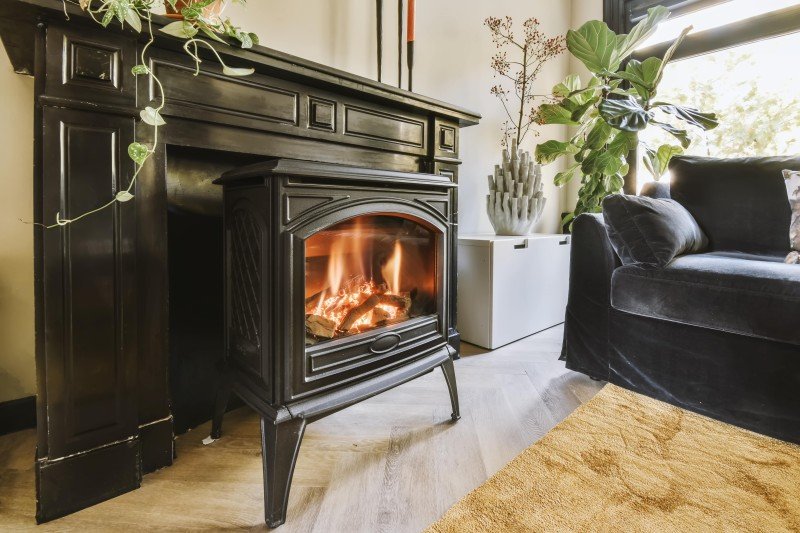The Comprehensive Guide to Fireplaces and Stoves
Fireplaces and stoves have actually been important to human civilization for centuries, serving as a source of warmth, light, and convenience. These devices come in different types and have actually developed for many years, dealing with varied choices and technological advancements. This article provides an informative overview of fireplaces and stoves, highlighting their types, benefits, maintenance ideas, and installation factors to consider.
Kinds of Fireplaces
The world of fireplaces is rich and varied. Here are the most typical types:
Wood-Burning Fireplaces:
- Traditional and charming.
- Needs seasoned wood and routine upkeep.
- Produces an enjoyable aroma and crackling noise.
Gas Fireplaces:
- Offer benefit and ease of usage.
- Available in vented and vent-free options.
- More efficient and cleaner than wood-burning choices.
Electric Fireplaces:
- Provide ambiance without the need for a chimney.
- User-friendly with push-button control options.
- Can be used as a supplementary heat source.
Pellet Stoves:
- Use compressed wood pellets as fuel.
- Highly efficient and environmentally friendly.
- Often equipped with thermostats for temperature level control.
Ethanol Fireplaces:
- Utilize bioethanol fuel, making them portable.
- Do not require venting, which permits for versatile placement.
- Produce a realistic flame with very little smoke.
Outdoor Fireplaces:
- Designed for outdoor settings; can be wood or gas-burning.
- Great for amusing and enhancing backyard aesthetic appeals.
- Often built from stone, brick, or metal.
Benefits of Fireplaces and Stoves
Integrating a fireplace or stove into a home uses various benefits:
- Aesthetic Appeal: Fireplaces act as striking centerpieces in any space, adding warmth and character to home decor.
- Increased Property Value: Homes with practical fireplaces tend to have greater resale worths.
- Energy Efficiency: Modern fireplaces and stoves are designed to be more energy-efficient, which can result in lowered heating expenses.
- Backup Heating Source: In case of power outages, wood-burning and gas fireplaces can function as important heating sources.
- Versatile Heating Solutions: Different types of fireplaces accommodate numerous heating requirements and lifestyles, from comfortable ambiance to efficient heating.
| Kind of Fireplace/Stove | Fuel Source | Efficiency Rating | Upkeep Level |
|---|---|---|---|
| Wood-Burning | Wood | Moderate | High |
| Gas | Natural gas/LP | High | Low |
| Electric | Electricity | High | Really Low |
| Pellet | Wood pellets | High | Moderate |
| Ethanol | Bioethanol | Moderate | Low |
| Outdoor | Wood or gas | Moderate | Differs |
Maintenance Tips
Appropriate maintenance extends the life of fireplaces and stoves, guaranteeing security and efficiency. Here are some necessary tips:
Regular Cleaning:
- Wood-burning fireplaces need to be cleaned up after a full season of usage to remove soot and creosote.
- Gas fireplaces require routine assessment of the burner and vents.
Regular Inspections:
- Have chimney sweeps carry out annual examinations to recognize obstructions or structural damage.
- Examine the seals and gaskets on gas systems to prevent leaks.
Fire Safety:
- Install smoke and carbon monoxide detectors in homes with fireplaces or stoves.
- Keep a fire extinguisher near the fireplace or stove for emergency situations.
Use Quality Fuel:
- For wood-burning systems, constantly utilize seasoned wood; prevent dealt with or painted wood.
- When utilizing pellets, ensure they are kept correctly to avoid moisture absorption.
Manage Airflow:
- Keep vents and ducts clear to promote effective ventilation and air flow.
- Think about using glass doors or screens to lessen particles and ash in the living area.
Setup Considerations
Installing a fireplace or stove requires careful consideration of several aspects:
Location:
- Choose an area that allows for correct clearance and ventilation.
- Consider the layout of your home and the benefit of natural heat circulation.
Building Regulations and Permits:
- Check regional regulations relating to setups and required licenses.
- Engage an expert to guarantee compliance with security standards.
Fuel Type:
- Evaluate your fuel choices based upon schedule, expense, and ecological impact.
- If going with gas, ensure existing gas lines can accommodate the brand-new appliance.
Ventilation:
- Proper venting is essential for safety and efficiency, especially for gas and wood-burning units.
- Consult an expert to figure out the very best venting option.
Visual Consideration:
- Select a style that matches your home's interior.
- Think about mantels, surround products, and colors that match your decoration.
FAQs
What is the very best type of fireplace for heating?
Gas fireplaces are generally more efficient for heating, while wood-burning fireplaces provide more ambient heat.
How often should I clean my fireplace?
Wood-burning fireplaces should be cleaned a minimum of as soon as a year, while gas fireplaces need less regular attention depending on usage.
Can I set up a fireplace myself?
While some property owners might attempt DIY setup, it is suggested to hire a professional to make sure safety and compliance with building regulations.
Are electric fireplaces efficient?
Yes, electric fireplaces are extremely efficient and can serve as efficient extra heating sources, specifically in smaller sized areas.
What is the life expectancy of a fireplace?
The life-span of a fireplace differs depending on the product, type, and maintenance; nevertheless, a well-kept wood-burning fireplace can last over 30 years.
Fireplaces and stoves stay classic functions in homes, providing warmth and atmosphere. Understanding please click the up coming post , benefits, and maintenance requirements can assist homeowners make informed decisions about installation and care. With mindful planning and routine upkeep, these devices can boost both the comfort and value of a home for many years to come.

